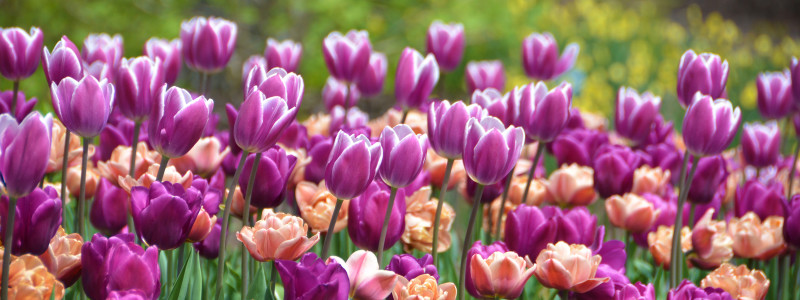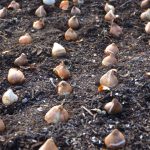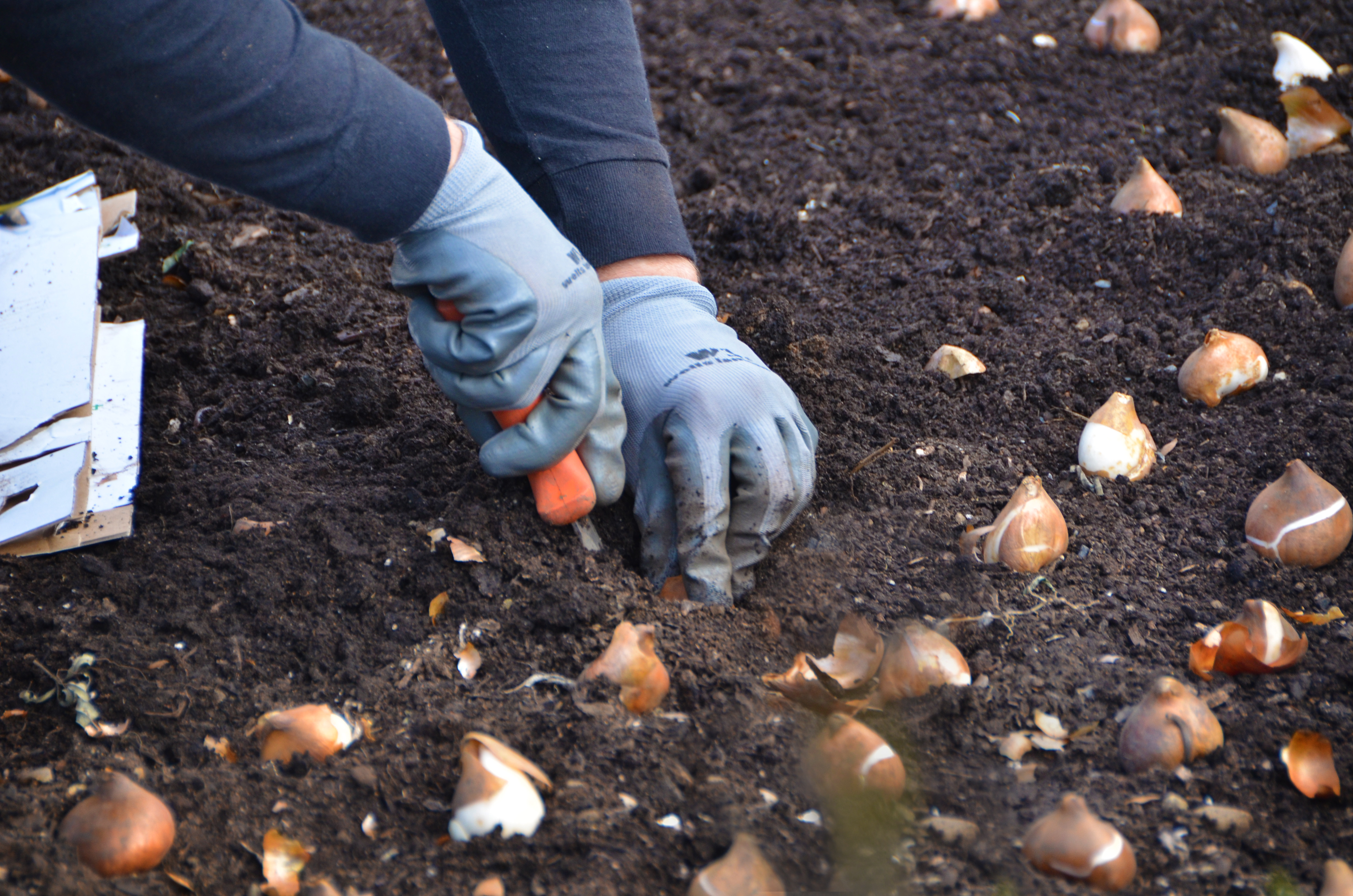When spring finally comes to the gardens, 35,000 tulips will pop through the soil of beds all over Coastal Maine Botanical Gardens, giving us an incredible display of color as the world comes out of its winter sleep. But before we see our incredible rainbow of flowers, these plants need to have things just right…

The sun’s rays act as a messaging system for plants. All summer long, the sun’s light tells tiny structures inside of green plant cells to create sugars that the plant will use as food. Those sugars are stored in a root or bulb under the soil, where it can be used even when the plant is done making food just as animals fatten up before hibernation. As the days get shorter, the sun’s message to make food is cut off, and the plant begins to rest, pulling its food from roots beneath the soil.
During the fall, some plants are getting their buds ready to burst the next spring. Cells whose only job is to help the plant to grow line up at the tips of the branches and bulbs of plants like tulips and peonies, where they wait for springtime to pop into action. Without these cells, these plants’ growth may be stunted, making short, misshapen plants, or worse—no plants at all.

If the soil is stepped on or crushed too tight around the bulbs, they won’t be able to get the water they need to make new cells, or the space to grow new roots to hold them in place in spring rainstorms.

These big patches of soil in the gardens aren’t places where we’ve forgotten to plant. They are the place where all the action is happening! The tiny buds of peonies and food-filled bulbs of tulips are working hard to get ready to put on their spring show.
Keep your eyes out for places where the soil is bare, and help these plants survive the winter by staying on pathways or grassy areas. We can’t wait to see you—and our 35000 tulips!—this spring!
– Jo Gammans, volunteer and guest services coordinator